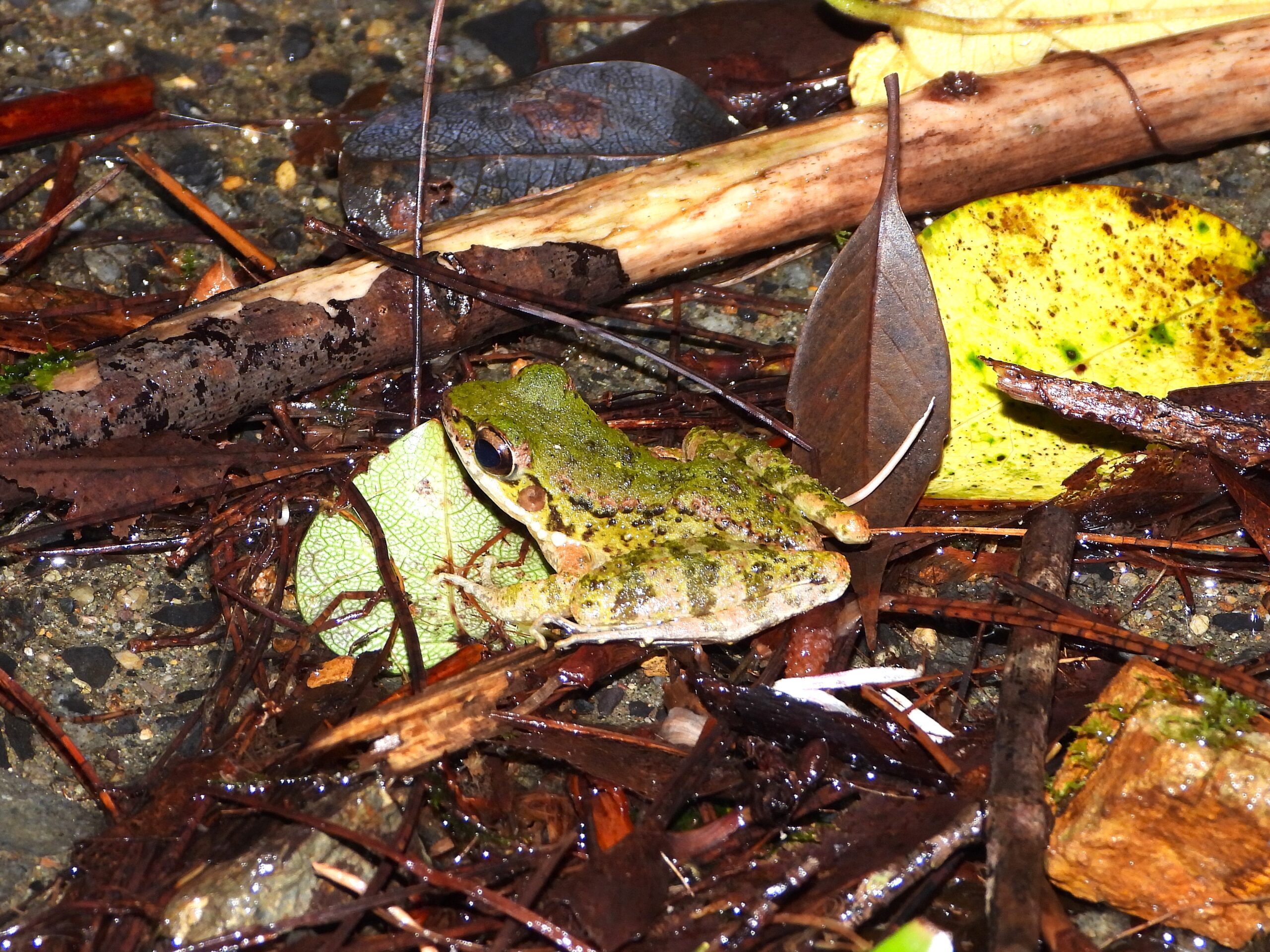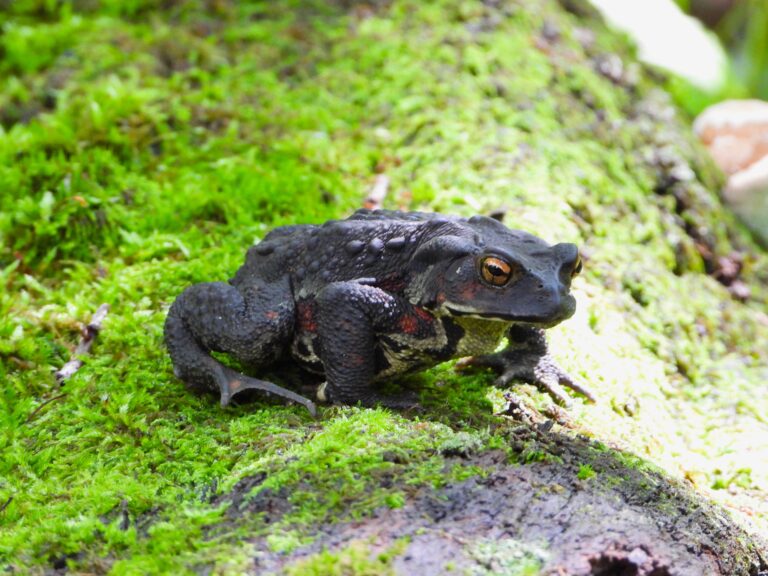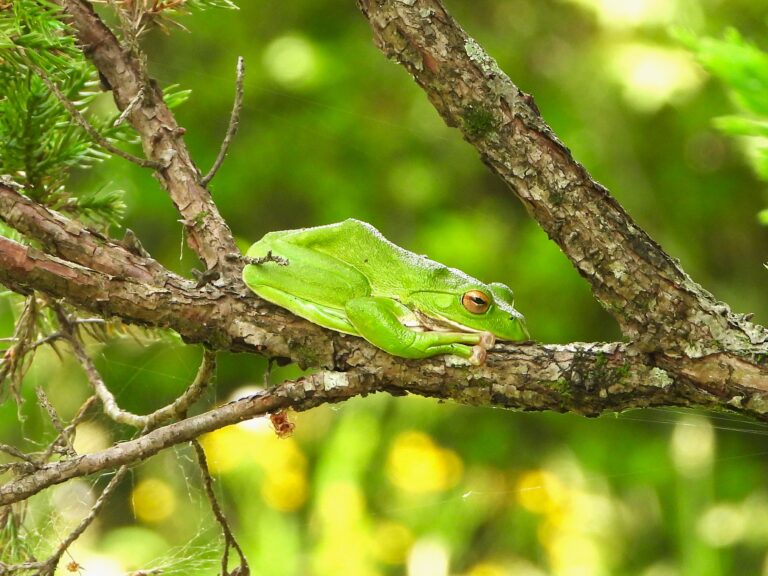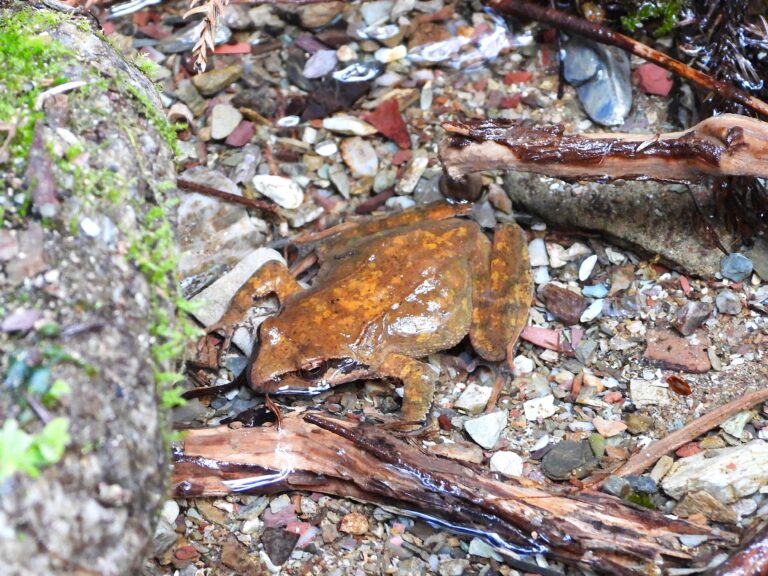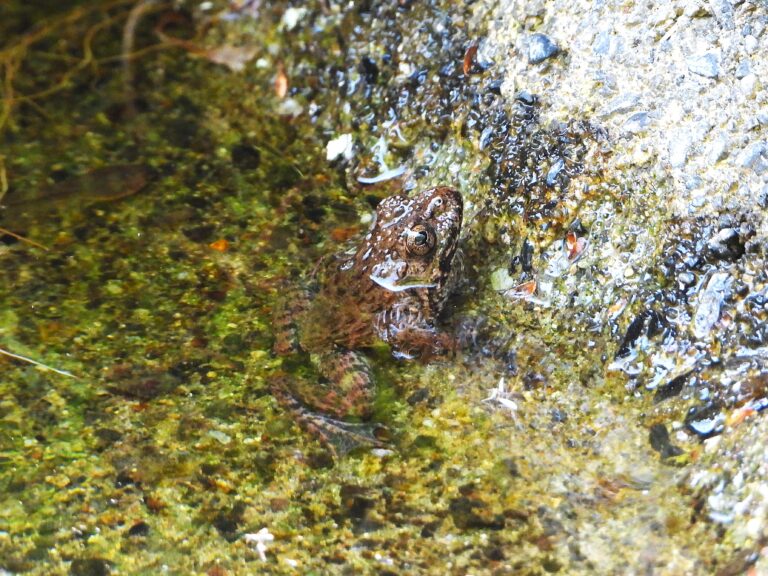Amami Tip-nosed Frog (Odorrana amamiensis) – Wildlife of Japan
Introduction
The Amami Tip-nosed Frog (Odorrana amamiensis) is an endangered amphibian found only on Amami Ōshima and Tokunoshima Islands in southern Japan. It was described in 1994 as a distinct species, separated from other Ryukyu tip-nosed frogs. This frog inhabits clear, fast-flowing mountain streams in subtropical evergreen forests and serves as an indicator of healthy river ecosystems.
Appearance
Adult males measure around 5.6–6.9 cm in snout–vent length, while females reach 7.5–10 cm or more. The body is slender with a sharply pointed snout, giving the species its English name. The dorsal coloration ranges from brown to olive green with subtle mottling, and the belly is whitish. The hind legs are long and strong, allowing the frog to leap efficiently across slippery rocks. Tadpoles are dark brown to blackish with golden speckles and muscular tails adapted for life in mountain streams.
Habitat & Distribution
This species is endemic to Japan, occurring only on Amami Ōshima and Tokunoshima in the central Ryukyu Islands. It lives along shaded, cool forest streams, typically in upper and middle elevations where water is clean and oxygen-rich. On Tokunoshima, it can also be found in smaller forested ravines and lower stream sections that retain natural vegetation.
Where to See in Japan
The best time to observe this species is on rainy nights, when individuals become active along forest streams. In Amami Ōshima, look for them in the central and northern mountain regions. On Tokunoshima, search forested ravines inland. Move quietly with a flashlight and listen for the soft, high “pii…piyoo” calls near the water.
Behavior
The Amami Tip-nosed Frog is nocturnal and spends most of its life near flowing water. Males call from rocks or vegetation during the breeding season. During the day, they rest under stones or in leaf litter. They are agile jumpers and occasionally perch on low vegetation beside streams.
Reproduction
Breeding occurs mainly from October to May, with a peak in winter. Males gather along streams to call for females. Eggs are laid under stones or in small crevices where the current is slow. Tadpoles appear from January to July and metamorphose by early summer, when young frogs move onto the forest floor.
Conservation
This species is facing severe threats from habitat alteration such as road construction, logging, and river modification. It is also vulnerable to predation by invasive small Indian mongooses introduced to Amami. Because its total range is extremely limited, even local environmental changes can have serious effects. The Amami Tip-nosed Frog is listed as Endangered by the IUCN and as Vulnerable on Japan’s national Red List. Protecting riparian forests and maintaining clean water quality are essential for its survival.
Author’s Impression
I encountered this frog on a rainy night along a mountain stream in Amami Ōshima. Its quiet beauty and slender form stood out in the sound of running water. Compared to the more colorful Ishikawa’s Frog, this species is modest yet equally beautiful—a true symbol of Amami’s hidden forests. It is one of the species I always hope to see together with the Ishikawa’s Frog when exploring these islands.


